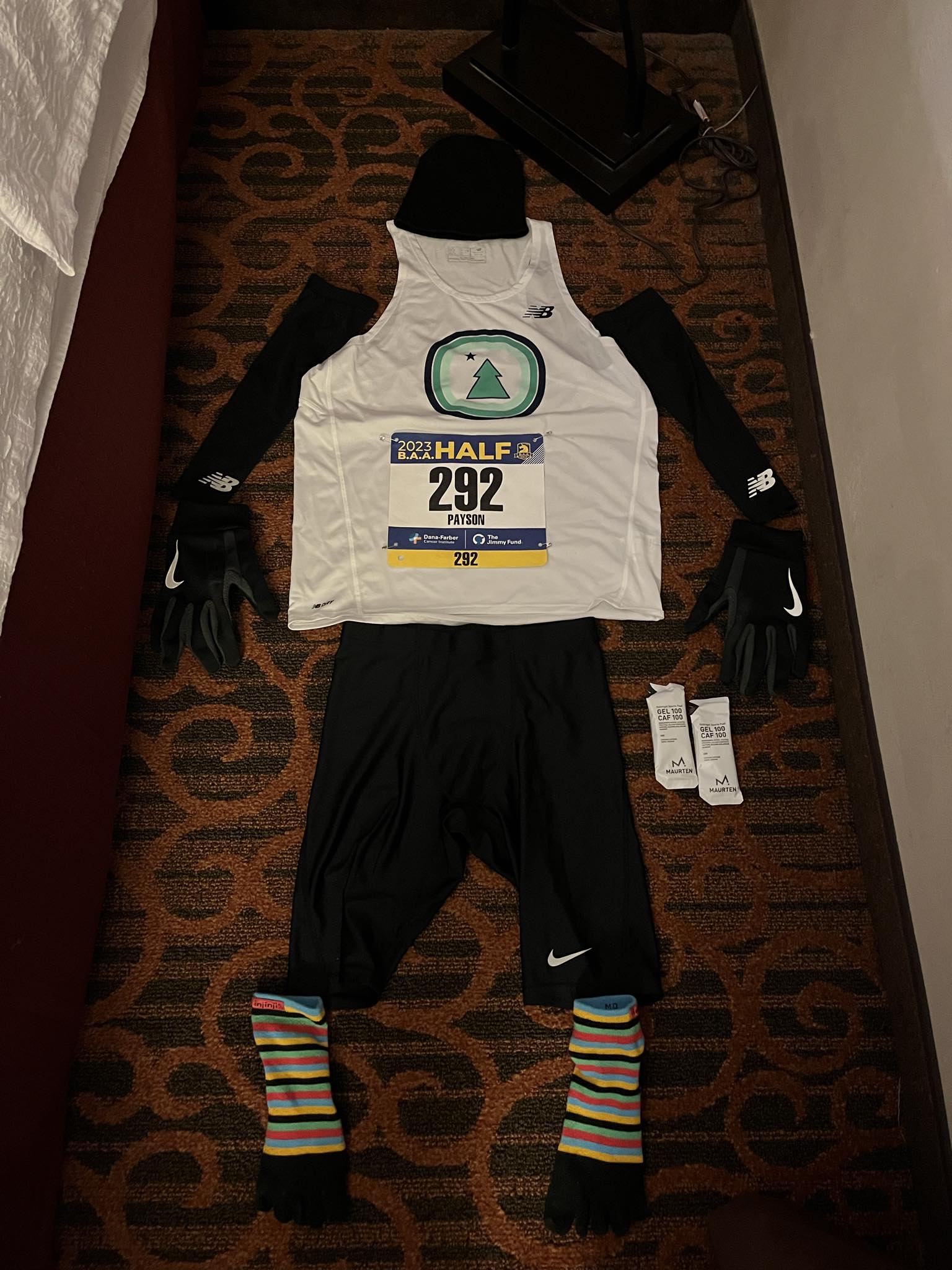PRE-RACE STRATEGY
With the Boston Marathon this weekend, it seems like the perfect time to go over some guidelines for crafting a solid pre-race strategy. Whether you’ll be toeing the line in Hopkinton Center alongside the 33,000 other runners registered for this year’s edition, or have some other races approaching, a pre-race strategy is often the difference between feeling good enough in the final stretches to push and, well… not.
While everyone’s routine is unique, and should be practiced and honed through each training block, here are some of the basic guidelines we follow.
Note: These guidelines are intended for aerobic athletes only. High intensity races, 3k on down, should follow a slightly different protocol, especially concerning nutrition.
WEEK BEFORE
Volume: With most marathon training programs calling for a 2-3 week taper, depending on peak volume and training experience, in the final week leading up to the race you should be aiming to hit around 40% of your peak weekly mileage, not including the marathon itself. Any workouts in this period should maintain intensity, while also cutting volume. Remember: don’t run harder just because the workout is shorter. The goal of these workouts is to maintain leg speed, build confidence and feel good! You might end up running a bit faster compared to previous workouts simply because you’re fresh. This is okay, as long as you aren’t forcing it. Save it for the race!
Focus on rest, recovery and proper fueling.
Carbs: Again, since this is your peak taper, as long as you continue eating around the same amount of carbs as you have been all training block, the “carb loading” should be automatic. Don’t try to eat more carbs than normal or adjust your diet in any other major way. The gut doesn’t like change, and healthy eating is healthy eating.
Don’t freak out if your scale shows a bit of weight gain (3-6 lb.) this week. This is normal, and shows you’re ready for the big day!
Quick note on carbs:
Eating fibrous veggies before simple carbs will help slow absorption and maintain stable blood sugar levels so glucose is available as easy energy instead of fat.
Only consume simple carbohydrates within 2 hours of a workout/race and immediately after, as these are mostly empty calories that help with that jolt of intense energy.
Enjoy both simple and complex carbs immediately after to aid recovery.
Simple Carbs (mostly sugar): Sugar (duh!), syrup, honey, fruit juice, white bread, pastries, white pasta.
Complex Carbs (mostly fiber and starches): Whole-grains (bread, brown rice, pasta, quinoa), vegetables (broccoli, sweet potatoes, etc.), legumes (lentils, beans) and fruit (apples, berries, oranges, etc).
DAY BEFORE
Have your main meal around mid-day and a small dinner early in the evening so you have plenty of time to digest.
Example dinner: spinach salad w/almonds and grilled chicken/salmon. Dress with olive oil.
Possible snack if you’re feeling peckish later in the evening: cottage cheese with berries and nut butter.
RACE MORNING
T-minus 4-hours: If you are able to, wake up at least 4 hours before the gun goes off and down oatmeal/yogurt mush and electrolytes drink. Try to go back to sleep or at least lay down for a while to continue resting.
T-minus 2.5 hours: Get up at least 2.5 hours before race time and drink 3-4 ml of sports drink/lb. body weight (16 oz./150 lbs.)
T-minus 2 hours: Eat a simple breakfast (150g carbs) at least 2 hours before.
ie. white bread w/honey + banana
T-minus 1.5 hours: Go for an easy 10-20 minute barefoot/sandal/minimal shoe shakeout shuffle. When you get back, do some myofascial release on tight spots with a lacrosse ball and/or foam roller. Don’t do too much though, as this will deplete core energy and induce stress. Just relax.
T-minus 1 hour: Consume 1.4mg caffeine/lb bodyweight between 60 and 50 minutes before race time.
ie. 210mg for 150lb athlete. That’s about 8 ounces of black coffee and 3 ounces of dark chocolate.
T-minus 40 minutes: Get to the race location at least 40 minutes prior to the gun and do an easy 20 minute warmup. Depending on your experience level and the duration of the race, you could add in some tempo-pace pickups to really get the juices flowing and prepare the heart for the hard effort that lies ahead.
MID-RACE FUELING
Experiment during long runs and workouts during the training block to find the minimum intake that works for you. Ideally, you will have become better at burning fat as a fuel during the pre-season and base building phases by strategically waiting to consume carbs until after a run on easy days.
Athletes have found anywhere between 15g-60g of simple carbs (honey) per hour to be effective. Split this intake into 30 minute increments, preferable before water stations. Again, experiment during training to find the minimum amount that leaves you feeling good. More is not necessarily better, and risks upsetting your stomach, which can really derail a great race! After the months of training we put into each of two-three peak races a year, it really is a shame when a bad stomach sets you back.
PAYSON’S TOP 3 TIPS
- Pack your snacks: When traveling for a race I make sure to pack as many of my “go-to” foods as possible to have on the road and on hand at the hotel. This usually includes my breakfast the morning of (I’m a big oatmeal guy) bananas, familiar energy/protein bars, almonds, gels /drink mix’s, etc.
- Plan your meals: I love having a BIG lunch the day before and then just eating more simply the night before. My favorite pre-race dinner is salmon w/ rice and a little veg like Brussels sprouts or broccoli.
- Strategize gel stashing: I like to take a gel 10-15 minutes before the start to begin the fueling process, and then usually every half hour I am getting another gel out. Don’t be afraid to practice where you are going to stash your gels and fuel during your last long run, so that’s not a stressor for you morning of!
Remember, the more you can plan and prepare beforehand the smoother race morning will go! Happy racing! Hope to see you in Boston!
CONCLUSION
We hope this helps you formulate your perfect pre-race strategy in time for your peak race! Doing the same thing every time really helps the body get primed for a hard effort and reduces the stress of having to figure everything out on the fly. You’ll be amazed how having a good plan can lead you to a great effort. Not only will you run faster, but you’ll feel better doing it.
Happy racing!


Leave a Reply